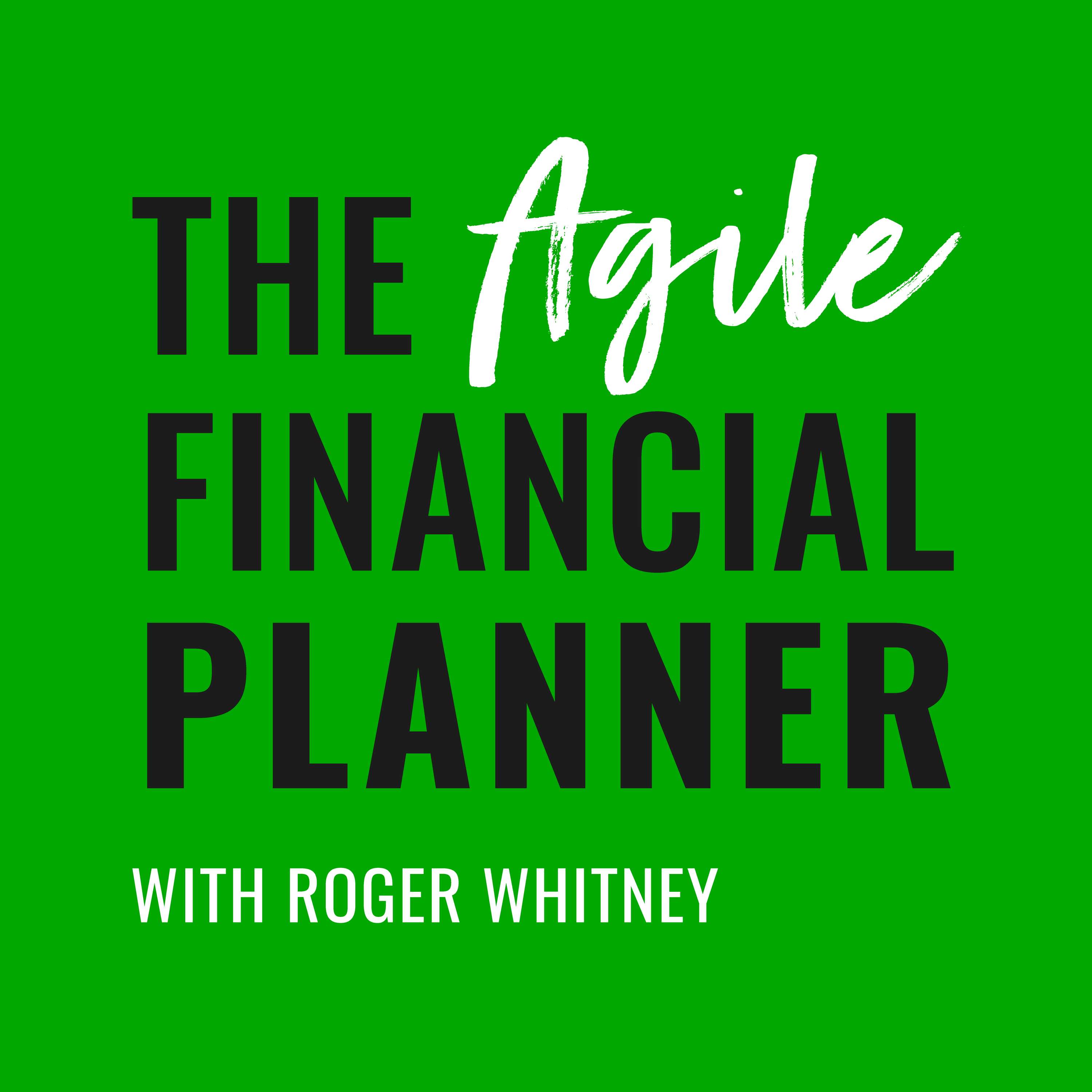
The Agile Financial Planner
Roger Whitney
Podcast
Episodes
Listen, download, subscribe
Implementing the Agile Financial Planning Approach as a Financial Planner, Ep #7
In the last episode, I spoke about the 5 pillars of the Agile Financial Planning process. It sounds great when you first hear it - and there’s nothing about it that is complicated or confusing. But you may not see right away how you can apply it immediately in your financial planning practice. So, on this episode, I want to walk you through what I consider to be the basics of an Agile financial planning approach. Listen carefully and ask yourself this question, “What is the most important thing we’re trying to achieve for the client at each stage of the process?” Outline of This Episode [0:35] Why I’ve become with the “Life Coach” label [3:55] Love to my friend, Alex for his boldness and willingness to stand up for respect [5:51] Let’s get into the agile financial planning process [18:05] Think of a doctor to imagine what your role should look like in the process [19:46] Investment strategy is one of many levers - not the most important FOUNDATIONAL ASSUMPTION: You must view the process as a collaboration For a very long time, financial planners have approached financial planning as the expert, extracting tons of data from their clients to devise a recommended plan of action. That’s great - for as far as it goes. The problem is that it’s most often a painful, laborious process that clients endure rather than enjoy. To make Agile financial planning work, you have to turn that approach upside down. You want the process to be a collaboration between you and your client, not a “do as I say” top-down directive. When you make this shift, it fundamentally changes the way you go about what you do for clients. And believe it or not - they begin to enjoy the process and even get excited about it. Step 1: Make your financial planning a project management exercise Traditionally, we financial planners jump right into the financial planning session with our clients, dissecting everything, getting anal about the numbers, and making them feel overwhelmed. What I’d suggest is this: Rather than dive straight into the deep end of the financial assessment pool, wade into the shallow end first - and do it together. You’ll be able to get into a more detailed analysis as you go. You want to build momentum working together so that trust is established and the benefits of the process can remain in clear focus. Start at a high level and give clients the permission to “guess” at things they don’t know and to dream big about their future. Have them categorize everything as “needs” and “wants” so that they get to make the decisions about what their ultimate goals will be. Get ballpark figures on assets, capital, etc. You’re attempting to get them involved easily and quickly and be excited about it - so they don’t get bogged down in the details. The goal is to get to a feasible strategic plan that’s focused on the things the client cares about. Step 2: Create a one year project - define the baby steps Once you’ve got the overview out of the way and are establishing trust with your clients at every step along the way, you want to step into 4 specific areas of interest that will help you understand your client and help them understand what they really want. 1 - Life goals (financial and non-financial) 2 - Their cash flow (spending and income) 3 - Their net worth 4 - Issues of risk management (estate planning, insurance needs, etc.) Discussing these together uncovers opportunities to address each of them in positive ways - and to address current practices that are inhibiting each of them. While some of the things you see during these talks will seem shiny and attractive, keep this in mind: It’s important to prioritize them together to pinpoint the things you uncover that are the most significant and needle-moving right now. The shiny things often won’t do much to move things toward their long-term strategic plan. It’s often the unattractive or boring levers that move the needle forward the most. Focus on those and you’ll see results more quickly. Where do investment management and investment strategies fit in? You may have noticed by now, I haven’t once broached the topic of investment management or investment strategies. Why? Because those are one line item in this entire process - not the focus. Of course, you’ll get to those things and they will be a very important part of the process, but they cannot be the focus. When we make it the focus, clients get bored and bail out of the process - because it’s not talking about the things they really care about - their dreams and their future. In future episodes. I’ll address the investment side of the equation, but for now, let’s get clear on our client’s deepest desires regarding their future. That is the fuel that will keep us and them going over the entire planning process.
The Agile Financial Planner RSS Feed












